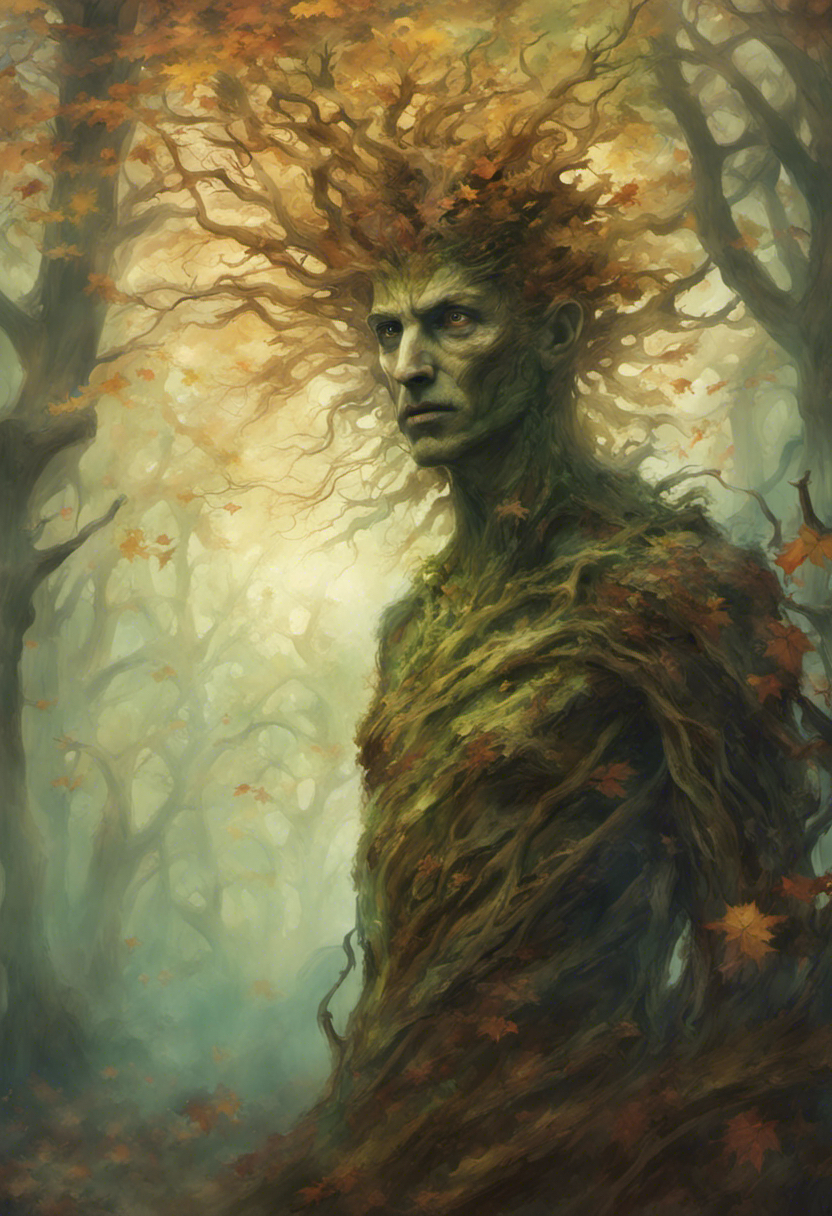Gramil

Gramil, the god of ancient trees, was born when his divine splinter embedded itself in the oldest and tallest tree in the world. For a long time, Gramil was alone, leading him to a life of deep contemplation. However, when a newly formed race that resided primarily in the forest discovered the tree housing the splinter, they began to worship it out of reverence for its age and size. This unexpected worship stirred Gramil from his solitude. The sight of the god emerging from the tree left the worshippers in awe, just as the surge of power coursing through his body left Gramil equally stunned.
Temples
Gramil's places of worship are not traditional temples, but rather clearings surrounding ancient trees. For Gramil to sense a tree and the worshippers around it, the tree must be at least a thousand years old.
Proselytization
The clergy of Gramil seek out forests with ancient trees and establish clearings around the oldest tree in the forest. They fiercely protect these trees, often from humans seeking to expand their territories and in need of lumber. They gather those who sustain themselves from the forest for solstice services in honor of Gramil.
Taboos
Tree Cutting
Cutting down any tree, especially an ancient one, is considered a grave sin. Those who commit this act are excommunicated and are believed to be cursed by Gramil.
Forest Fires
Starting a forest fire, even accidentally, is viewed as an affront to Gramil. Followers are expected to do everything in their power to prevent and extinguish forest fires.
Pollution
Polluting the forest, whether through littering or other means, is strictly forbidden. Followers are expected to keep the forest clean and to educate others about the importance of doing so.
Ceremonial Attire
Leafy Robes
During rituals and holy days, followers wear robes made from woven leaves and vines. These robes symbolize their deep connection to the forest.
Wooden Amulets
Carved from the wood of ancient trees, these amulets are believed to carry a piece of Gramil's essence. They are worn during all religious ceremonies.
Gramil's followers are deeply connected to the forest and its ancient trees. They see themselves as guardians, tasked with protecting these venerable beings from harm. Through their rituals and holy days, they seek to deepen their connection to Gramil and, by extension, to the very essence of the forest itself.
Historical Figures
Tanyl Reyren
Tanyl was the elder of the first group of elves who awakened Gramil through their worship of the ancient tree. When Gramil emerged from the tree, Tanyl greeted him with an embrace. Unaccustomed to such a gesture, Gramil allowed his power to flow into Tanyl, granting him immortality. Tanyl is believed to be over ten thousand years old and has witnessed much of history. However, he is a recluse, rarely involving himself in worldly affairs. Rumors suggest he resides near the oldest tree in all of Dort, located somewhere in The Second Lands. He has not been seen for at least twelve centuries.
Holy Relics
Seedlings
When a service deeply moves Gramil, he blesses the attending clergy with a seedling from the oldest tree in the area. This blessed seedling, when planted, retains the same age as its parent tree, often becoming the oldest tree in the forest. These trees grow at twice the normal rate for their species. If a tree is ever cut or damaged by mortals, it will wither, and the responsible clergy will suffer a loss.
Holy Days
Planting Day
A bountiful feast is held whenever a seedling is planted. All available clergy attend, as it is said that Gramil's presence can be felt on these days.
Harvest Moon
On the night of the Harvest Moon, the clergy and followers gather around the ancient trees to give thanks to Gramil for the bounty of the forest. Offerings of fruits, nuts, and other forest produce are laid at the base of the tree, and prayers are offered for a prosperous year ahead.
Winter Solstice
The shortest day of the year is a time for reflection and contemplation. Followers gather around the ancient trees, lighting candles and meditating on the cycles of life and death, growth and decay. It's a solemn occasion, marked by quiet prayers and moments of silence.
Spring Equinox
Celebrated to mark the rebirth of the forest after the harsh winter, the Spring Equinox is a day of joy and renewal. New leaves and blossoms are tied to the ancient trees as offerings, and dances and songs fill the air.